
There’s no other gem in the world like Oregon sunstone. It’s the only sunstone with copper inclusions and the only sunstone that can be transparent and have a natural red and/or green color.
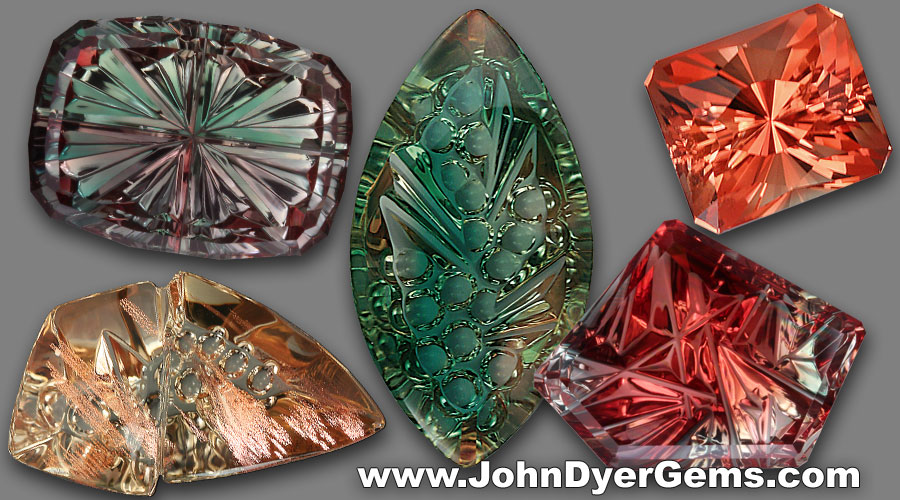
North American Indians traded rough sunstones across western America and reportedly associated them with the sun. However, after sunstone was discovered at the Ponderosa mine in central eastern Oregon in 1980, it became even more noted for its beauty as a gemstone. Considering the uniqueness of Oregon sunstone, it’s not surprising that it was designated the state gem of Oregon in 1987.
Before the discovery of Oregon sunstone at the Ponderosa mine, the term “sunstone” was only used as a trade name for feldspar minerals that had a glittery effect or golden sheen. Gemologists call this phenomenon aventurescence. It’s caused by light reflecting from platy crystals of copper, hematite or another mineral inside the stone.
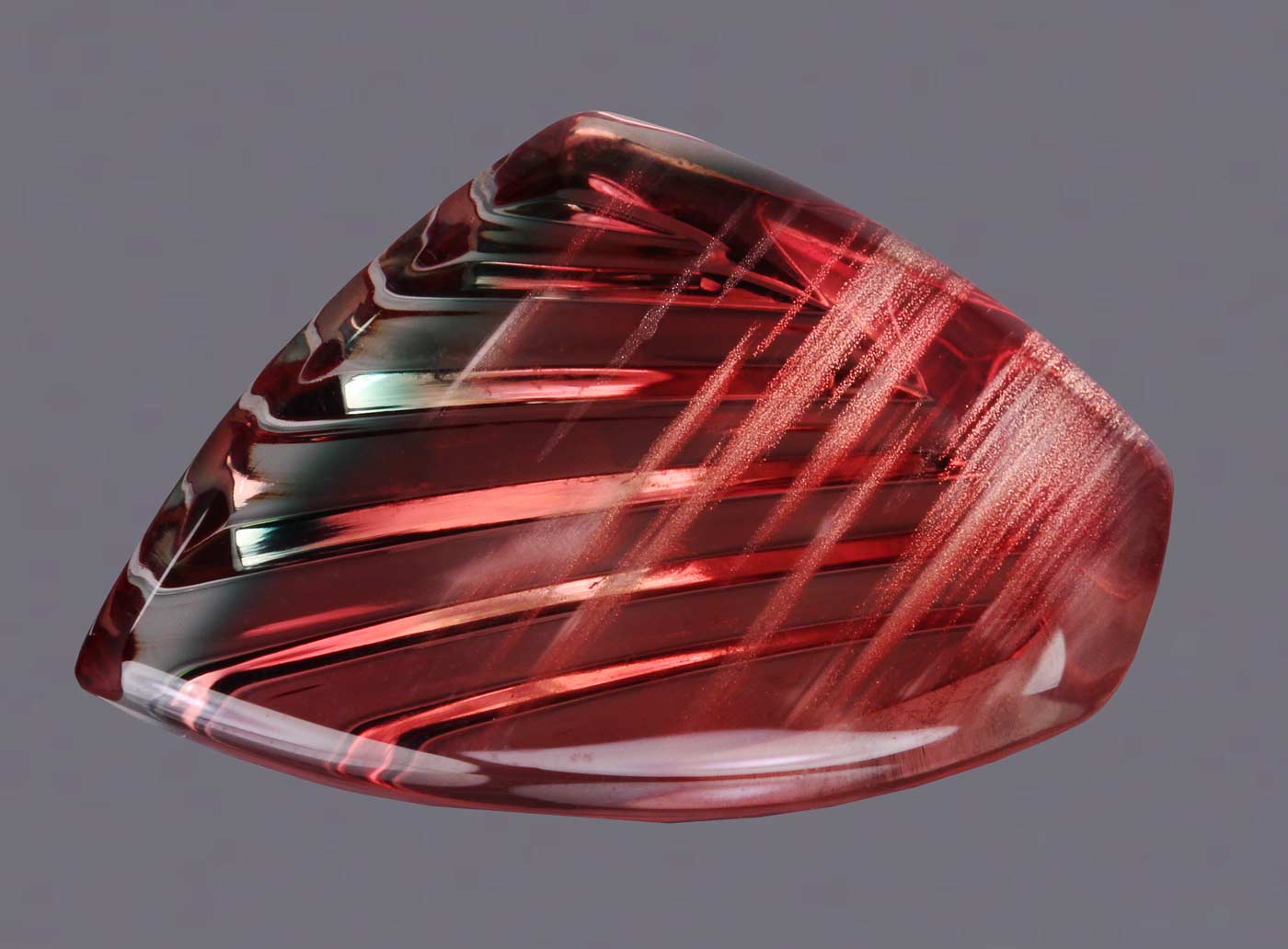
The term schiller is also used to describe the glistening appearance of sunstone. “Schiller” is derived from the Old High German scilihen, which means to wink or blink. Oregon sunstone dealers tend to use “schiller” to describe the twinkling effect of copper inclusions in sunstone, perhaps because it’s shorter than “aventurescence” and easier for consumers to understand. Dealers in Sunstone also like the term Schiller as they feel it only refers to the copper platelets found in natural Oregon Sunstone, whereas aventurescence has a wider application and can be used to describe certain other gem types.
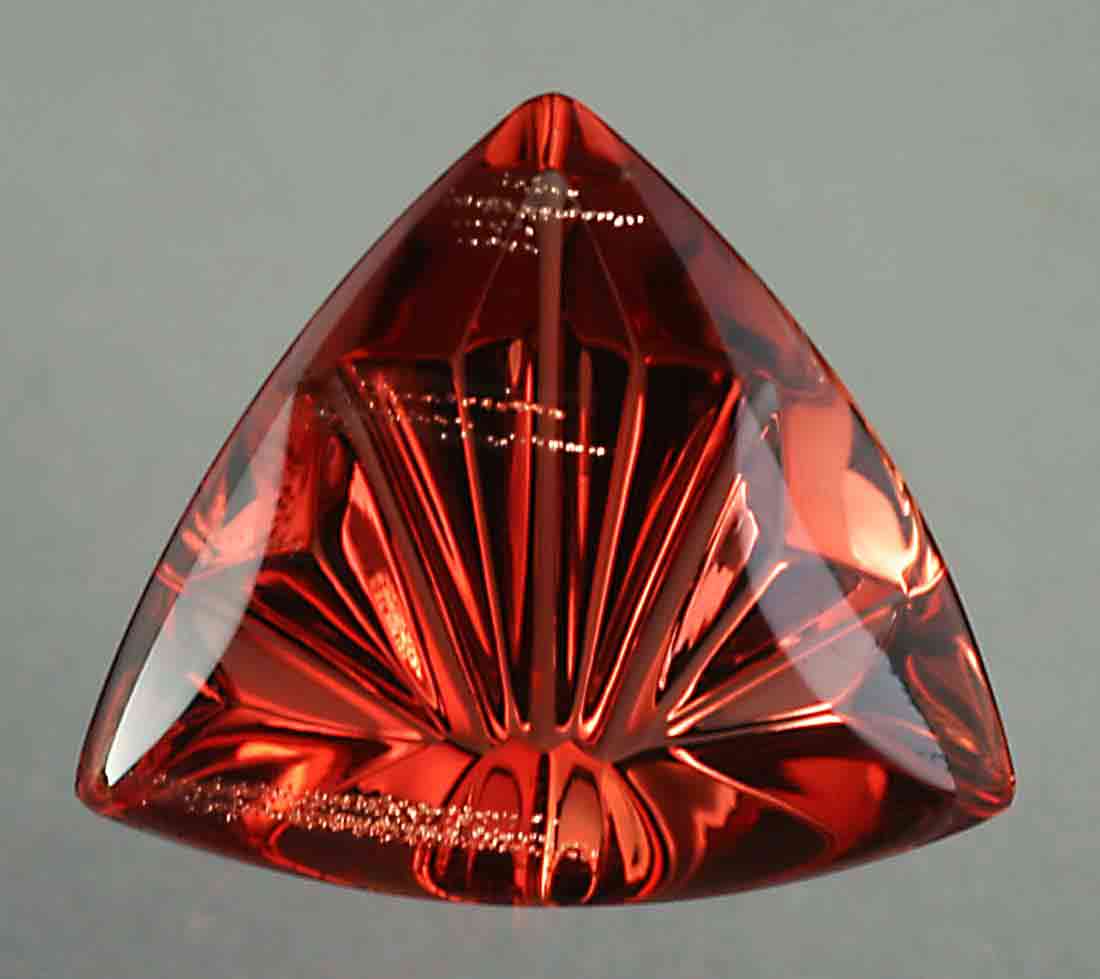
John has found that Oregon sunstone schiller can be a great design element when carefully chosen and matched with the cut. He prefers sunstones with localized clearly visible schiller to ones with solid schiller that hides the cutting on the back of the gem. John also tries to avoid stones that only have a fuzzy diffuse schiller without a good flash because they can look hazy. Here are some examples of how John creates distinctive cuts in Sunstones with schiller.
Oregon sunstone is mined in two areas of the state: The Plush mining area in Lake County in south central Oregon near the California border and the Ponderosa mine in Harney County more than 100 miles north of Plush. Currently, the largest volume of Oregon sunstone is found in the volcanic highland of the Ponderosa mine owned by Desert Sun Mining. It’s located at 5,750 feet (1753 m) above sea level and surrounded by hills covered with ponderosa pines interspersed with large flat meadows. The high elevation limits mining to about five months when the snow is melted.
There are several smaller mines in the Plush area from which John obtains his sunstone rough. These include the Sunstone Butte Mine, Spectrum Mine, Pana Mine and the Double Eagle Claims. These mines have formed the Oregon Sunstone Miners Association (OSMA) in order to maintain the image for Oregon Sunstone as a rare, all natural, all American gemstone. Buyers can be assured that rough or finished sunstone from a member of the OSMA is free of treatment or enhancement of any kind and was mined in Lake or Harney County, Oregon, USA.
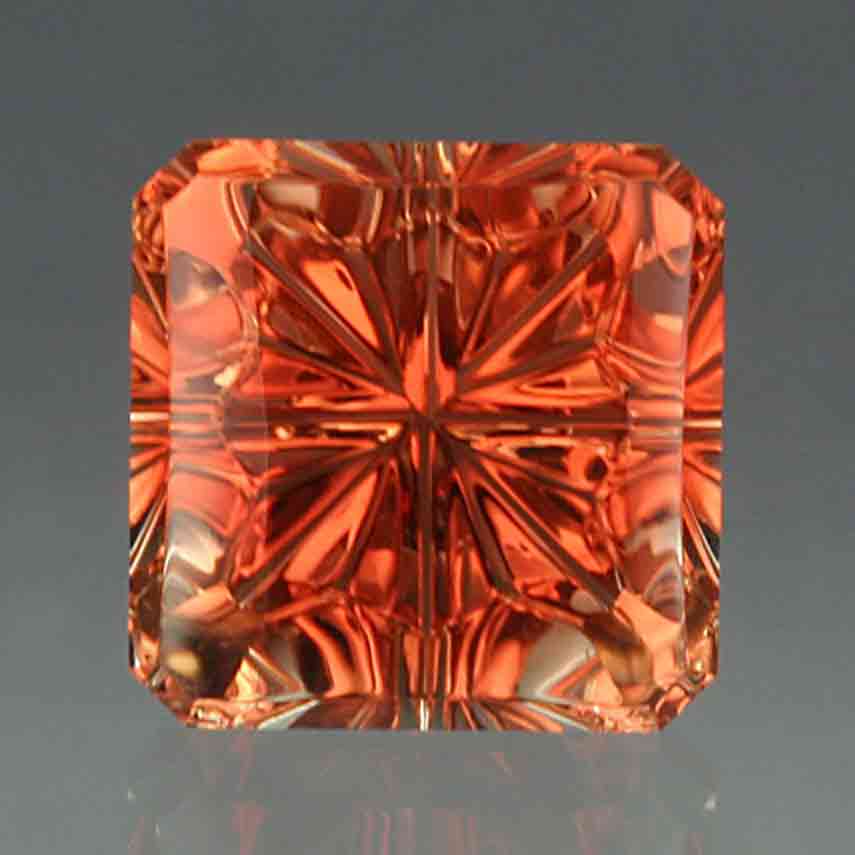
Oregon sunstone occurs in a variety of colors beginning with colorless and ranging through yellow, orange, brown, pink, red, green, blue-green and multicolor. The color is determined by the abundance and size of copper trace elements and platelets within the gemstone. Copper can impart a green, yellow, orange or reddish color to a sunstone.
John tells people that Oregon sunstone has a color “quality” to it that in his view is unique even among gems with the same color. This quality is a warmness or “soft” quality that shows even in “cold” colored sunstones such as the green ones.
The variety of colors and the multiple shades that are often in the same gem also make Oregon sunstone unique and especially suited to fantasy cuts (which are also called combination cuts since they feature a combination of different cutting methods). Since fantasy cuts/ combination cuts are one of John’s trademarks he loves working with Sunstone because of how well the cutting style and the stone go together. These kinds of cuts often show off the different shades of color in the same gem better than traditional cutting would. Also, the unique forms possible using these advanced cutting techniques are suitable for the unusual shapes that the sunstone rough often comes in. Some examples:
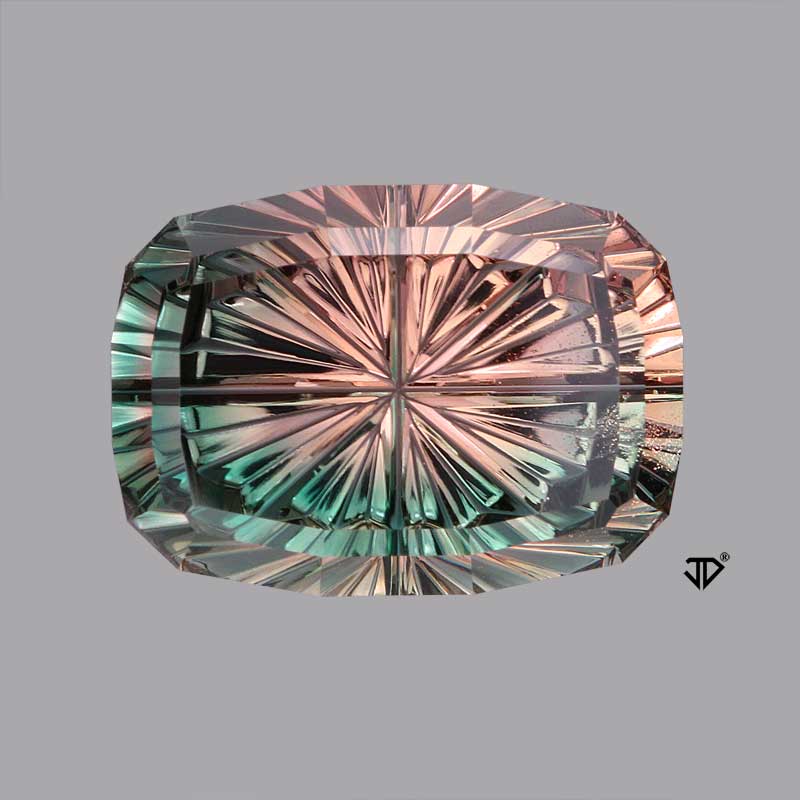
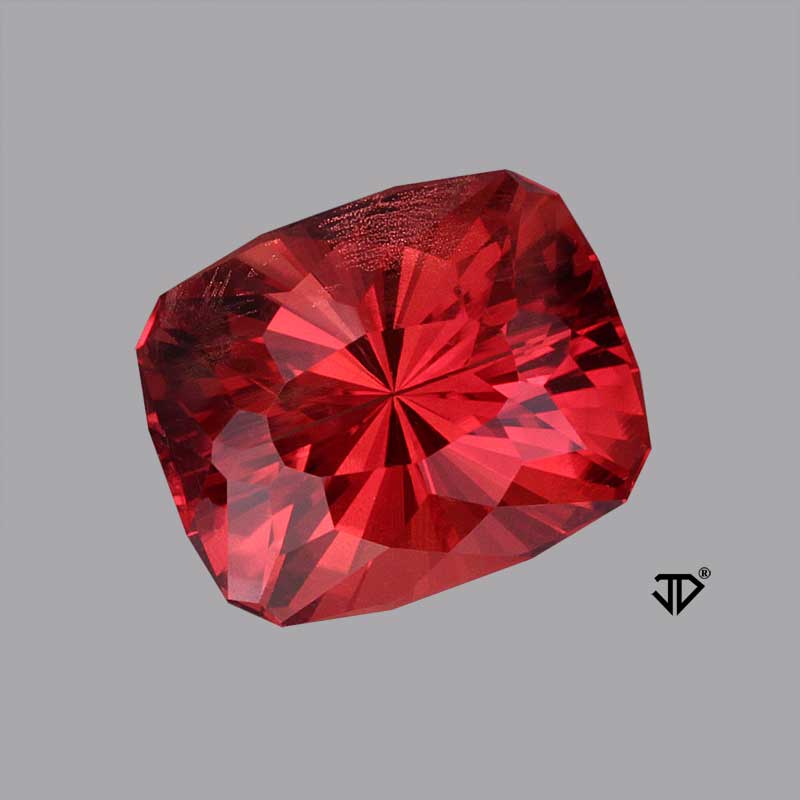
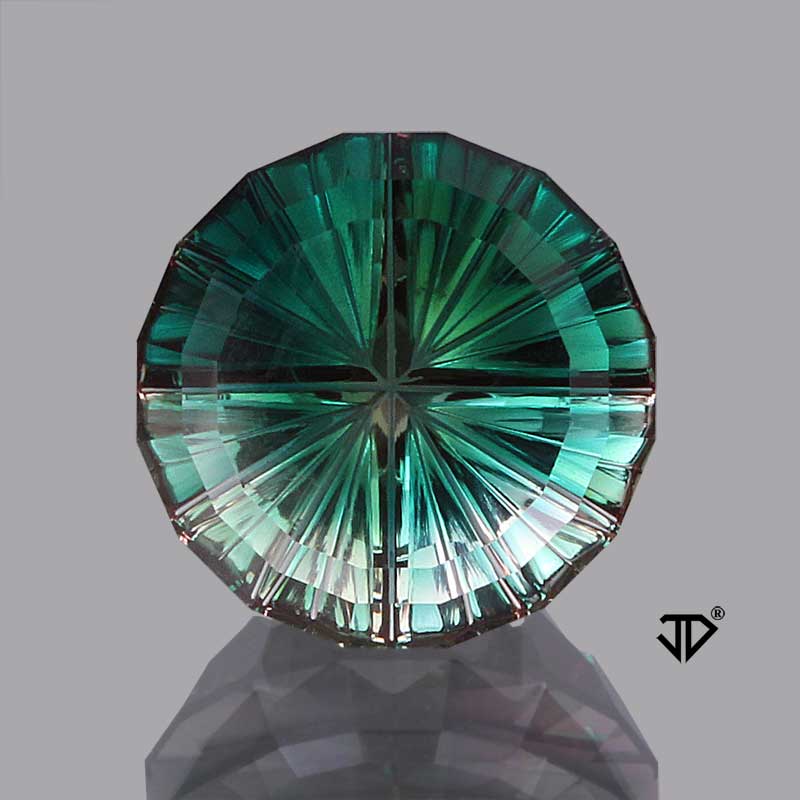
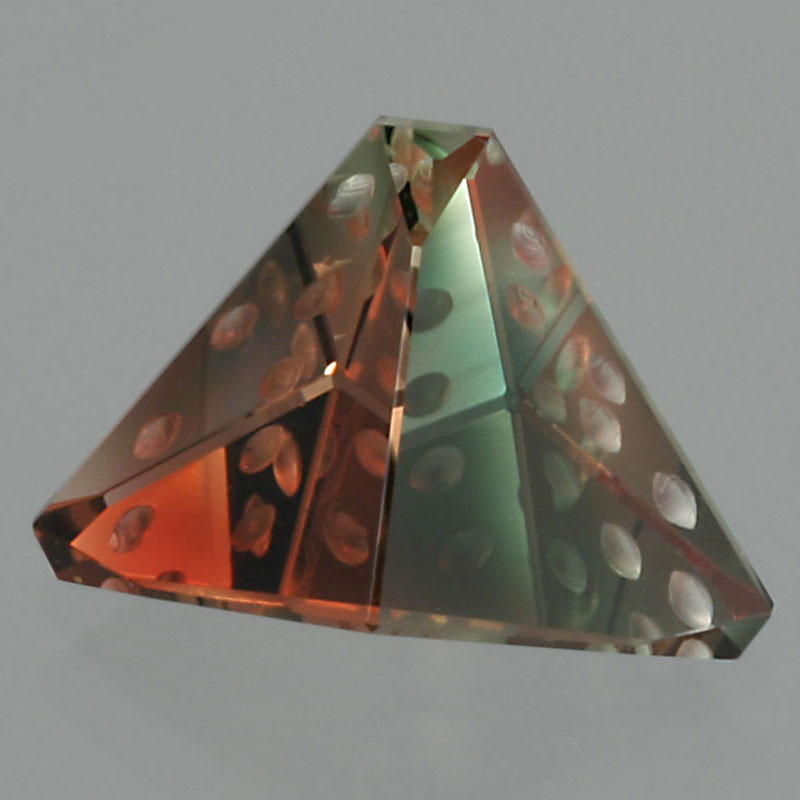
Oregon Sunstone is a gem-quality member of the feldspar group of minerals, which are noted for their diversity and optical effects. Feldspar minerals are further divided into two series (potassium and plagioclase) and eight series members. Oregon sunstone is a copper-bearing variety of the plagioclase series member labradorite. It has the chemical formula (CaNa)(SiAl)4O8 with the calcium (Ca) ranging from 70–50% and sodium (Na) from 30– 50%. There are sunstones outside of Oregon with a different composition, but their glittery appearance is caused by inclusions of hematite or goethite instead of copper. As mentioned previously, “sunstone” is a trade term that refers to the gem’s appearance rather than to its chemical composition or physical structure.
Oregon sunstone has the ability to exhibit different colors when viewed from different directions under transmitted light. For example, green crystalscan haveone direction in which they appear red.This property is called pleochroism and the colors shown can help distinguish Oregon sunstone from other similar appearing gems like tourmaline. Curiously, pleochroism is usually absent in other feldspars.
Oregon sunstone is a little harder than other feldspars with a hardness range of 6.5–7. Its resistance to scratching is very slightly less than that of amethyst, and slightly more resistant than tanzanite.
Other properties of Oregon sunstone are as follows:
Refractive Index (RI): 1.563–1.572
Specific gravity (SG): 2.67–2.72
Birefringence: 0.009
Optic character: Doubly refractive, biaxial, AGG reaction common
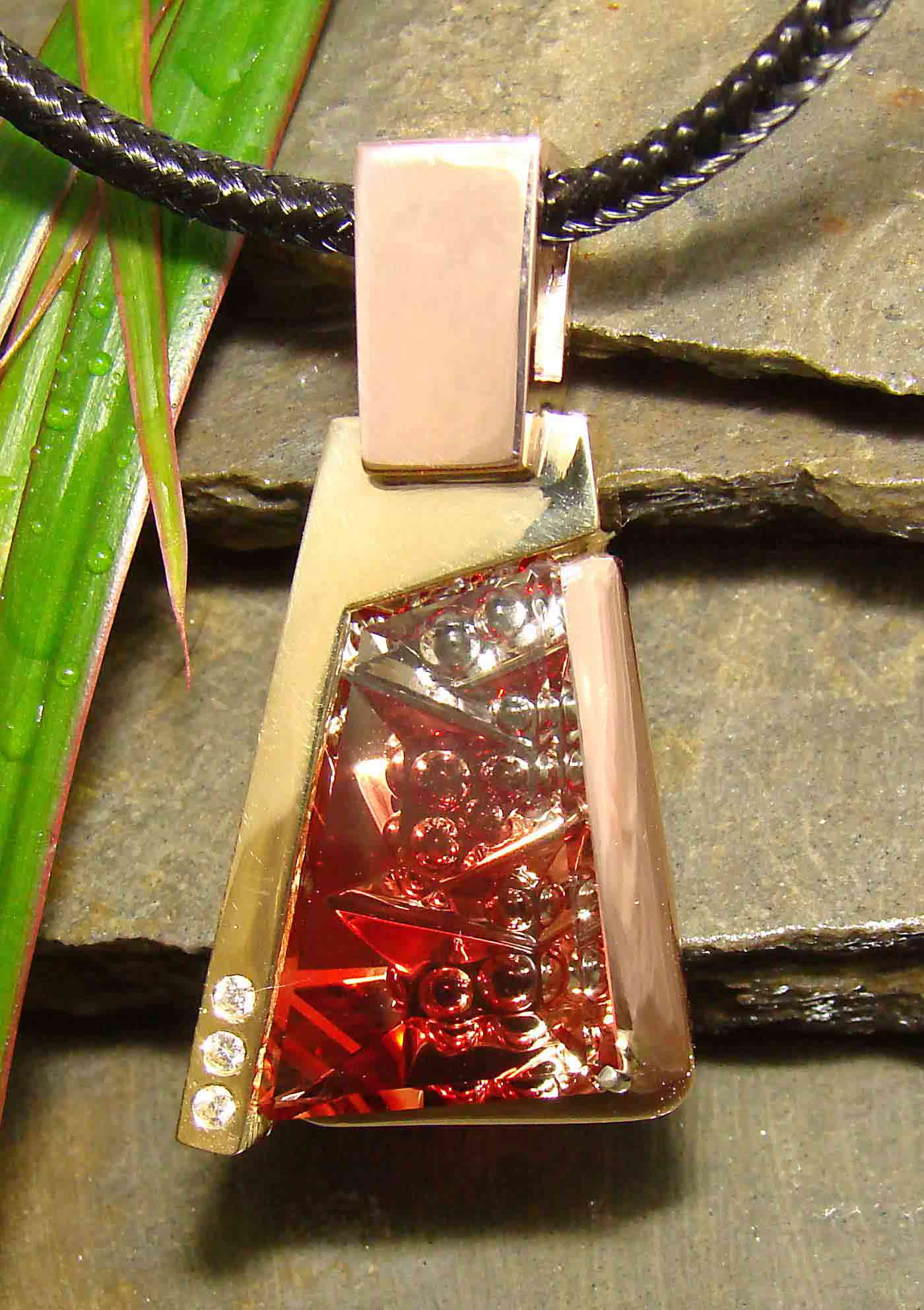
The safest way to clean sunstone is with warm soapy water and a soft cloth. The heat from steamers can cause it to cleave or crack and ultrasonic cleaners may cause existing fissures to expand. Sunstone cannot withstand the heat from a jeweler’s torch. Therefore, the stone should be removed during repairs involving a torch. Jewelers should avoid putting sunstone in a pickling solution because it can dull the surface of the stone. Also, since it is easy to have some contamination from quartz or other dust in the jeweler’s polishing buff, jewelers should avoid hitting the stone directly when buffing the metals in the jewelry piece. Usually John recommends handling and setting sunstone in a similar manner to tanzanite, since tanzanite is just a bit less durable overall than sunstone in this way you will be playing it safe.
Due to sunstone’s perfect cleavage, it’s best to wear the gem in pendants, earrings, necklaces, brooches and occasional dress rings rather than in everyday rings such as bridal and engagement rings. Otherwise you might chip or crack the stone if you accidentally hit it against something. If you decide to mount your sunstone in a ring, choose a low protective setting such as a bezel setting. Gems set in high prong settings are more susceptible to damage. Nevertheless bezel-set feldspars can also be damaged if you wear them in rings while doing housework, gardening or engaging in contact sports. Sapphires and rubies are better choices for everyday rings, especially engagement rings and John has a wide selection of them in a variety of colors and sources, even some from Montana, USA. Besides being much more durable, sapphires and rubies are also more resistant to scratching.
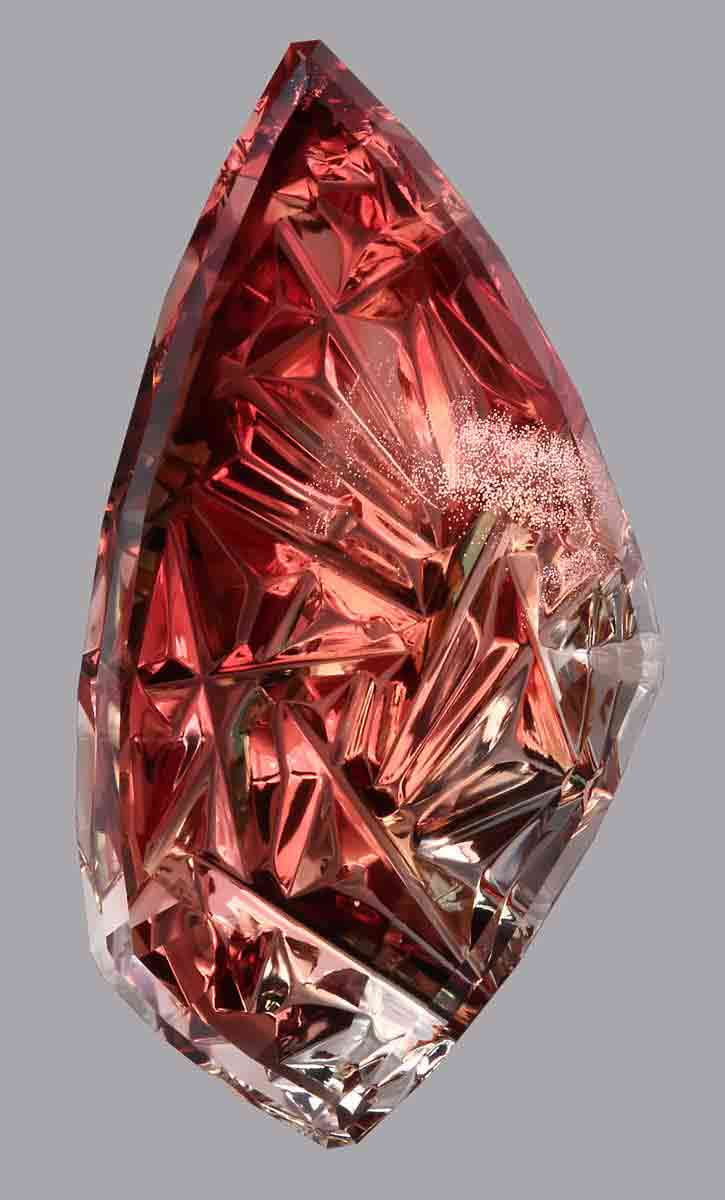
Transparency is a key factor in pricing sunstone. For example, orange and gold-colored sunstone from India is generally translucent to semi-opaque and often sells for $1 to $30/ct. Oregon sunstone can sell for much higher prices because it’s available in transparent qualities. A transparent orange sunstone sells for a lot more than one that is translucent.
Stones that weigh one carat or more cost considerably more than small melee. The per-carat price increases even more as the stone ranges from two to more than five carats.
Color also affects the price. Red and green are the rarest sunstone colors and so are the most valued. Strongly saturated orange stones can also fetch high prices. Bicolor and tricolor sunstones often sell for more than those with a single color. Colorless and pale yellow are the lowest priced colors for sunstone rough. However, if a large transparent sunstone is colorless or light yellow but creatively cut by a well-known cutter, its per-carat price increases significantly to cover the cost of the workmanship. Cabochons are the lowest priced cutting style.
Copper inclusions do not detract from the value of the sunstone unless they lower the transparency significantly. In fact, the presence of copper platelets is often considered desirable.
Fractures, however, do lower the price. Many fans of sunstone favor the schiller material. They say the shimmer in sunstone is what the stone is about. Some aficionados say that nothing beats a large, bright red sunstone with a blaze of schiller across the table.
Compared to other gem varieties of similar size and richness of color, John finds sunstone to be a very good relative value, especially for being an American mined gem. It is priced extremely competitively with gems such as tourmaline which are mined overseas. For example, clean, bicolor tourmaline (depending on the size and brightness of color) usually retails from $300-$1200/ct in John’s inventory. A bicolor or tricolor sunstone would range from $150-$800/ct (also depending on size and color). So the multi-color sunstone is much more affordable in spite of being mined in an “high labor cost” country with fairly strict environmental and other controls.
A pinkish sunstone with John’s cutting would range in price from $180-$500/ct retail whereas a pink tourmaline would range from $250-$1,200/ct. Red sunstone and green sunstone would have a price range that is much closer to the price range of tourmaline of a similar color, but even a similar per carat price still makes sunstone a good value if you consider that it is sourced from a single region in the world, is mined in America (which is something that people appreciate) and has a much more transparent mine to market trading situation.
Written by Renée Newman, author of: Gemstone Buying Guide: How to Evaluate, Identify, Select & Care for Colored Gems
Whenever I need examples of unique, top-quality cut gemstones for my books, I contact John Dyer. For example, when updating the 3rd Edition of my Gemstone Buying Guide, I needed some photos of designer cuts for the section on non-traditional cuts in the chapter on shape and cutting style. On page 23, I used the two Dyer Oregon sunstones shown below as examples. One is a 5.13-carat red, green and colorless StarBrite™ Cut. The other is a 16.58-carat ZigZag™ Cut with unusual schiller. Nowhere else in the world will you find gems that look like these thanks to John’s distinctive cutting styles and the uniqueness of Oregon sunstone.
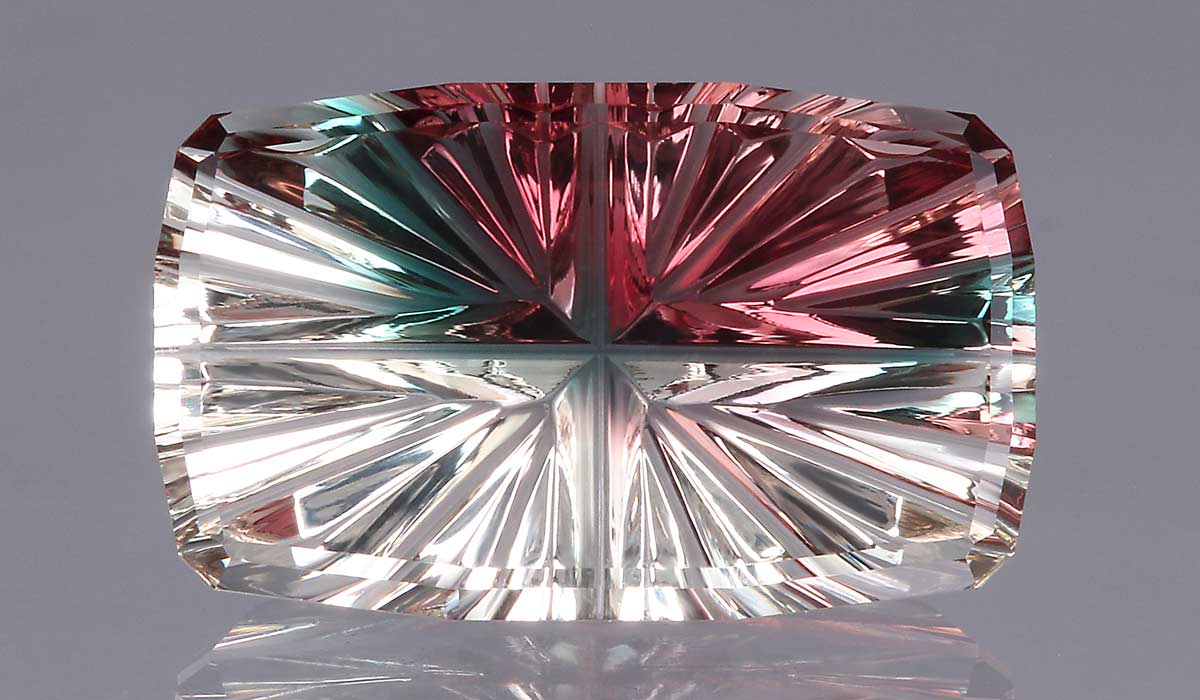
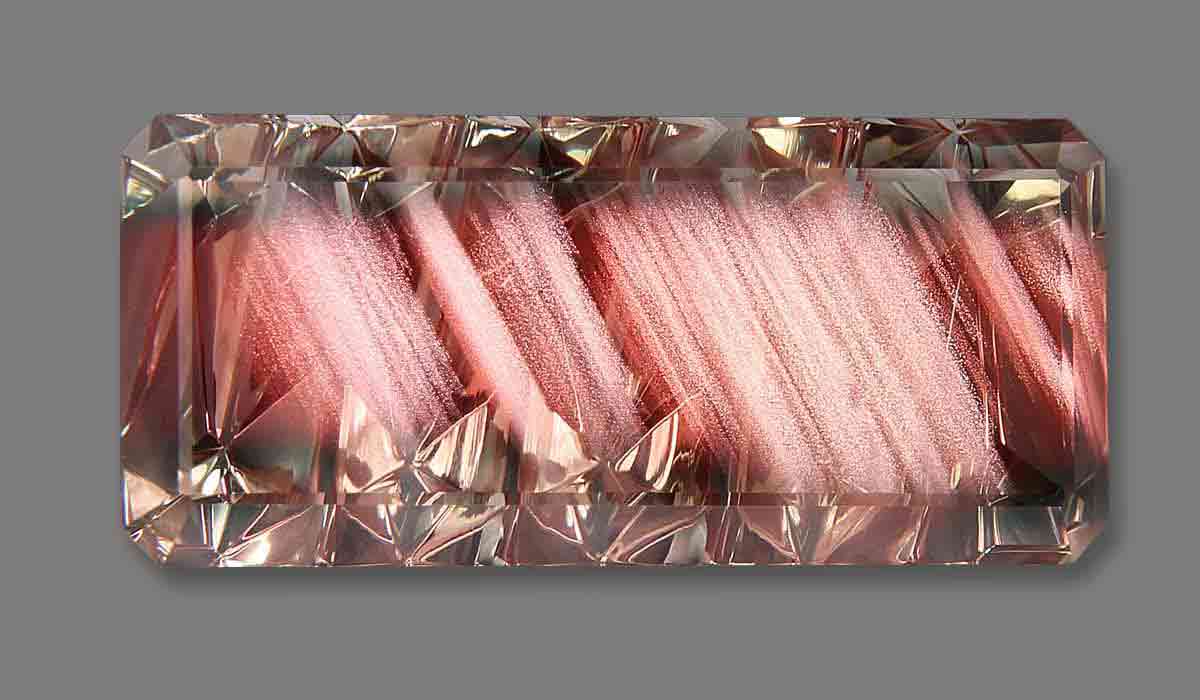
Would you like to wear a gemstone that will get people’s attention and admiration, yet be good value for your money? If so, consider purchasing one or more of John’s Oregon sunstones.
Sources of above information: Color Encyclopedia of Gemstones (1987) by Joel Arem, Exotic Gems: Volume 1 by Renée Newman, Gems: Fourth Edition by Robert Webster, GIA Gem Reference Guide, GIA Colored Stones Course, Gems & Gemology (Winter 1991 & Fall 2013), desertsungems.com, galeries.com, geologyin.com, gia.edu, ima-mineralogy.org. minerals.net, oregonsunstoneguide.com, oregonsunstonema.com, orsunstone.com, pana-mine.com.